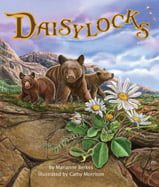Alignment to Standards for MO

| Grade | Number | Standard |
|---|---|---|
| 1 | SC-EC 1A4a. | specific organism may interact with other organisms or with the environment (e.g., pollination, shelter, seed dispersal, camouflage, migration, hibernation, defensive mechanism |
| 1 | SC-EC 1A4b. | Recognize different environments (i.e., pond forest, prairie) support the life of different types of plants and animals |
| 1 | SC-ES 1C5a. | Recognize the atmosphere is composed of a mixture of gases, water, and minute particles. |
| 1 | SC-LO 1A1b. | Identify the basic needs of most plants (i.e., air, water, light) |
| 1 | SC-LO 1A3a. | Describe the basic needs of most plants (i.e., air, water, light, nutrients, temperature |
| 1 | SC-LO 1B3a. | Recognize plants progress through life cycles of seed germination, growth, and development, reproduction and death. |
| 1 | SC-LO 1B3b. | Sequence and describe the stages in the life cycle of a flowering plant |
| 1 | SC-LO 1D1a. | Identify and compare the physical structures of a variety of plants (e.g., stem, leaves, flowers, seeds, roots |
| 1 | SC-LO 1D1c. | Identify the relationships between the physical structures of plants and the function of those structures (e.g., absorption of water, absorption of light energy, support, reproduction) |
| 1 | SC-LO 1D3a. | Identify the major organs (roots, stems, flowers, leaves) and their functions in vascular plants (e.g., absorption, transport, reproduction) |
| 2 | SC-LO 2C3a. | Illustrate and trace the path of water and nutrients as they move through the transport system of a plant |
| 3 | SC-EC 3C4a. | Identify specialized structures and describe how they help plants survive in their environment (e.g., root, cactus needles, thorns, winged seed, waxy leaves) |
| 3 | SC-EC 3C4c. | internal cues (e.g., hunger) and external cues (e.g., changes in the environment) that cause organisms to behave in certain ways (e.g., hunting, migration, hibernation |